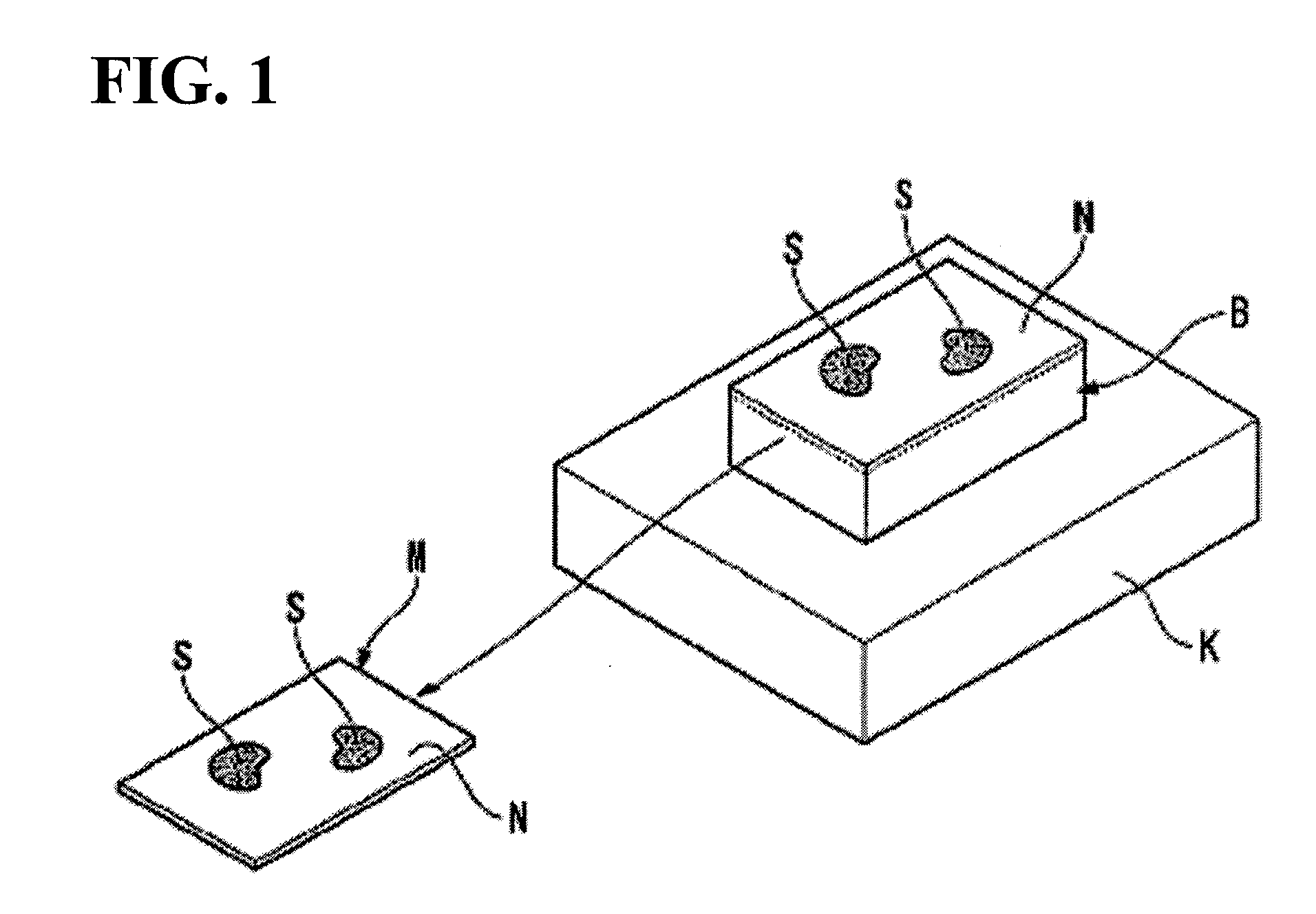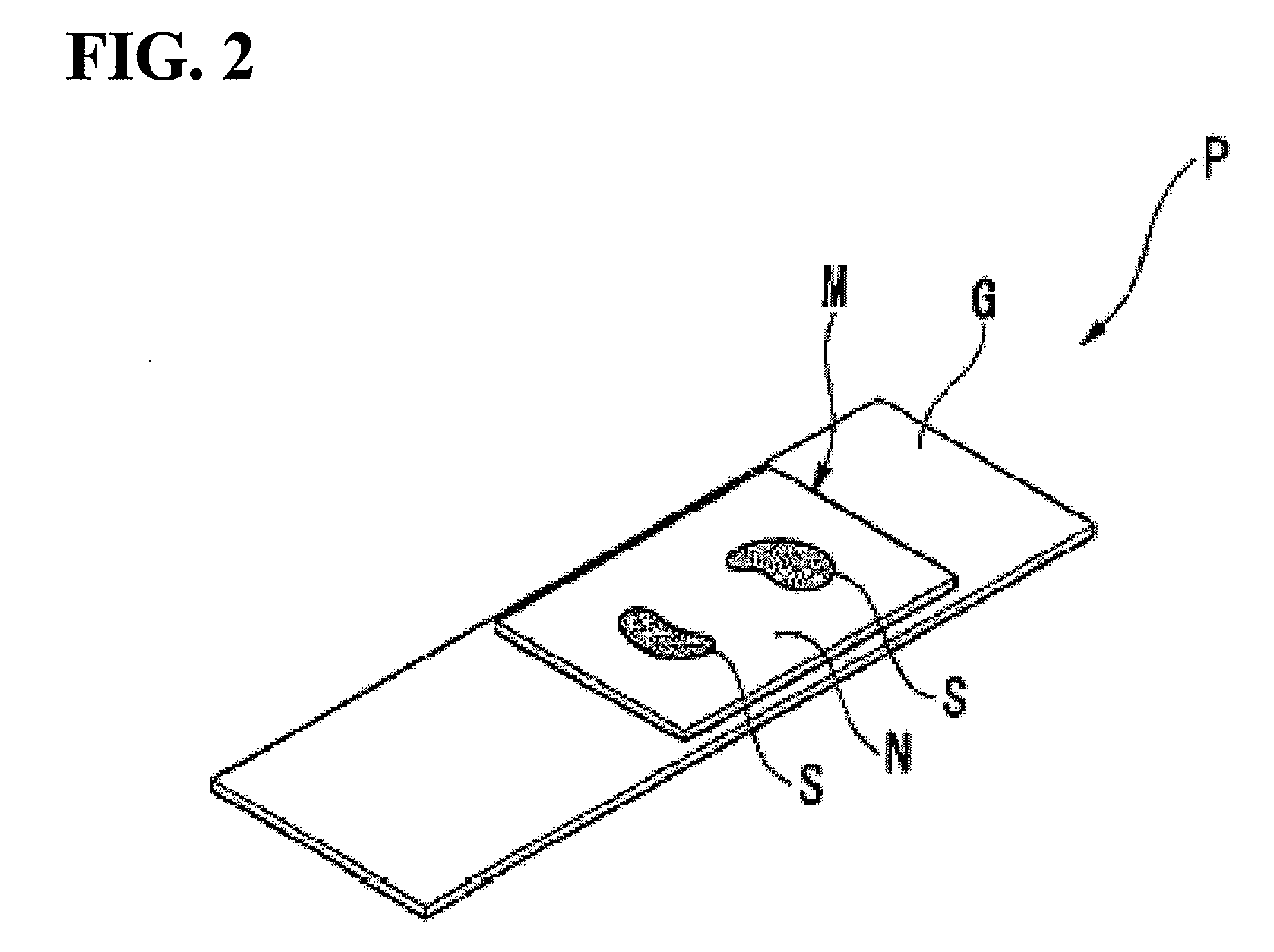Automatic thin-section manufacturing system
a manufacturing system and thin-section technology, applied in the field of automatic thin-section manufacturing system, can solve the problems of inability to recover (flatten) in the subsequent flattening process step, difficulty in thin-section cutting of embedded blocks, and inability to break the thin-section in some cases, so as to achieve smooth delivery, improve the degree of freedom, and maintain the effect of postur
- Summary
- Abstract
- Description
- Claims
- Application Information
AI Technical Summary
Benefits of technology
Problems solved by technology
Method used
Image
Examples
Embodiment Construction
[0055]An embodiment of an automatic thin-section manufacturing system according to the invention is described below by making reference to FIGS. 1 to 19. Referring to FIG. 1, the automatic thin-section manufacturing system according to the invention is a system which thinly cuts an embedded block B comprising an embedding medium N having embedded therein a biological sample S (for instance, ultra-thin sections from 3 μm to 5 μm in thickness), at a preliminarily set rake angle θ, to manufacture a thin section M.
[0056]The embedded block B is prepared by paraffin-substituting the water contained in the formalin-fixed biological sample S, and then solidifying the surroundings with an embedding agent N such as paraffin and the like to obtain a block. Thus, at this moment, the biological sample S is obtained embedded in paraffin. As the biological sample S, for instance, there can be used a tissue of organs and such taken out from human bodies and laboratory animals and the like, which is...
PUM
| Property | Measurement | Unit |
|---|---|---|
| thickness | aaaaa | aaaaa |
| thickness | aaaaa | aaaaa |
| thickness | aaaaa | aaaaa |
Abstract
Description
Claims
Application Information
 Login to View More
Login to View More - R&D
- Intellectual Property
- Life Sciences
- Materials
- Tech Scout
- Unparalleled Data Quality
- Higher Quality Content
- 60% Fewer Hallucinations
Browse by: Latest US Patents, China's latest patents, Technical Efficacy Thesaurus, Application Domain, Technology Topic, Popular Technical Reports.
© 2025 PatSnap. All rights reserved.Legal|Privacy policy|Modern Slavery Act Transparency Statement|Sitemap|About US| Contact US: help@patsnap.com



